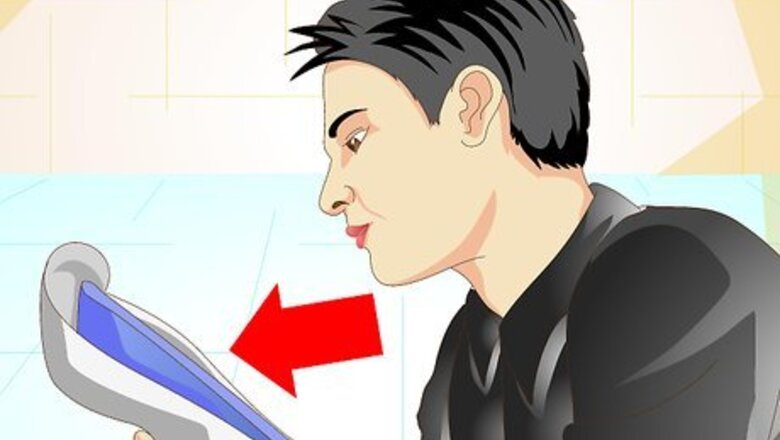
views
Deciding Between Repair and Replacement
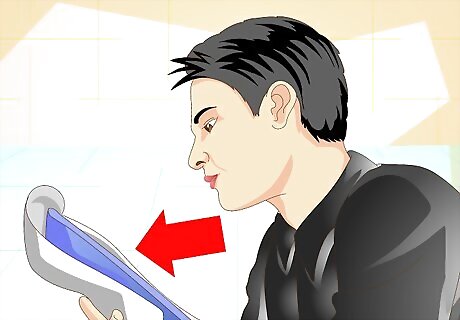
Check the terms of insurance and repair contracts. The cost of repair or a full replacement varies widely depending on your location, insurance, and type of windshield. If you have any insurance at all, a visit to an auto glass repair shop could surprise you. A professional repair is more expensive than a DIY kit, but the result may be significantly less visible. In Florida, Arizona, Kentucky, South Carolina, and Massachusetts, comprehensive auto insurance will cover the entire cost of repair or replacement. If you are in another state or country, or if your auto insurance isn't comprehensive, you may need to pay some or all of it yourself.
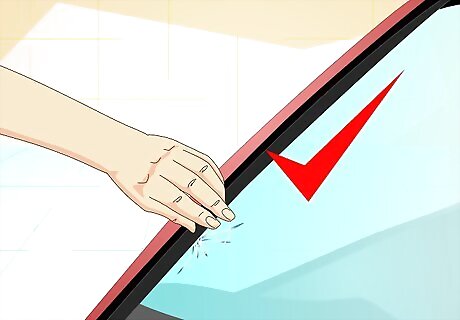
Look for damage near the edge of the windshield. Cracks or chips on the edge compromise the structure of the windshield. Even after repair, this damage could be a major safety concern. Have the windshield replaced instead. It is best to make repairs as quickly as possible once a chip or crack appears in your windshield. This will reduce the amount of damage that needs to be repaired and make the job much easier.
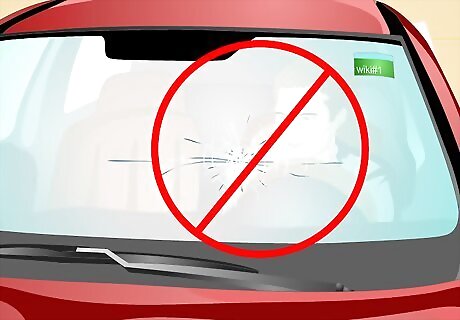
Consider the driver's line of sight. Damage directly in the driver's line of sight can interfere with driving even after repair. The most dangerous area is a 12 in (30 cm) wide stretch of glass centered in front of the steering wheel, and extending the height of the windshield wipers. Replacement is recommended if this area is damaged. You may decide to make the repair and judge the visibility afterward. In this area, two points of damage within 4 inches (10 cm) of each other require replacement. This pattern of damage can create a blind spot for the driver, obscuring the line of sight from both eyes.
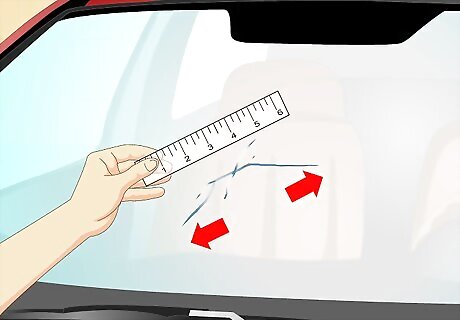
Measure the length of the crack. With modern techniques, most cracks shorter than 8 inches can be repaired at home. If a crack is over 8 inches long, a repair is not recommended, and you need to consult a professional, as the situation might require a full windshield replacement. If there are two or more cracks, take the car in to an auto glass repair shop and ask if repair is possible. Three long cracks almost always require full replacement.

Examine chips and dents. Damage from impacts may or may not be repairable. This depends on their shape and size: Circular or semicircular "bullseye" cracks must be less than 1 inch (2.5 cm) in diameter. A "star break," or point of impact with short cracks spreading outward, must have all cracks fit in a circle 3 inches (7.5 cm) wide. Other shapes should fit within a 2 inch (5 cm) circle, not counting short cracks running outward.
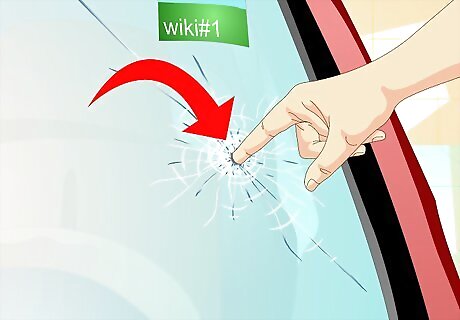
Check the depth of all damage. Windshields are made from two layers of glass, with a layer of plastic in between. If the crack extends past the outer layer and into the plastic or interior layer, replace the entire windshield. Windshields damaged from the inside are rare, and even a professional may be unsure how to evaluate it. For safety reasons, it's usually best to replace the windshield.
Preparing the Windshield
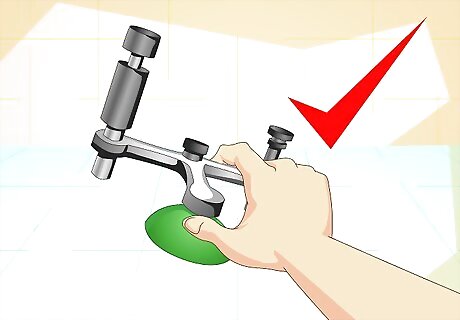
Purchase a bridge-style windshield repair kit. You can buy a windshield repair kit at an auto parts store, department store, or online. Ideally, choose one with a "bridge" applicator that fastens to the glass using suction cups. These are more stable than a syringe applicator. The applicator should also include a vacuum system to remove the air from the crack as you go. Almost all repair kits have similar components and work the same way. However, it's a good idea to read the instructions that come with the kit, to check for special requirements.
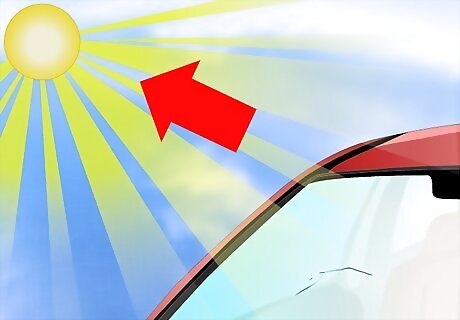
Plan to use sunshine or a UV lamp. You'll be filling the crack with resin that needs to be cured with ultraviolet light. If you can't wait for a sunny day, you'll need a UV lamp to finish the repair. If you're parked in the sun, shade the windshield until you're ready to cure. This will let you proceed at a relaxed pace.
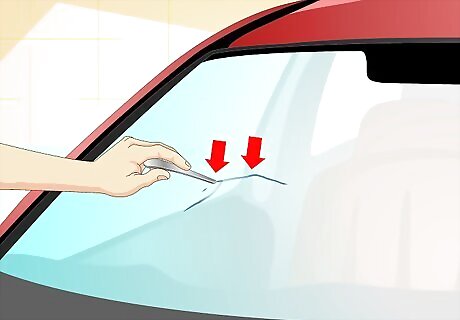
Tap out broken glass. Use a thin metal object to gently tap out small glass shards from impact points. Some kits come with a bullseye tapper than can be used for this purpose. Wear gloves while handling broken glass.
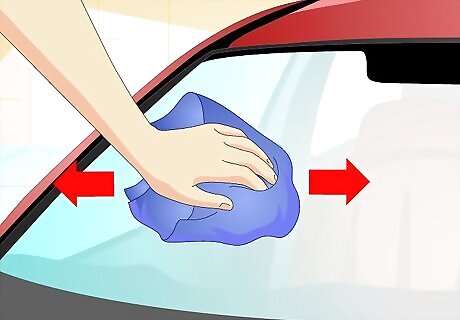
Clean and dry the windshield. The windshield must be completely dry before you begin. If there is any dust in the cracks — and there usually is — clean it with a dust blower, or a small amount of acetone or lighter fluid. If the glass is wet, dry it with a hairdryer.
Repairing the Damage
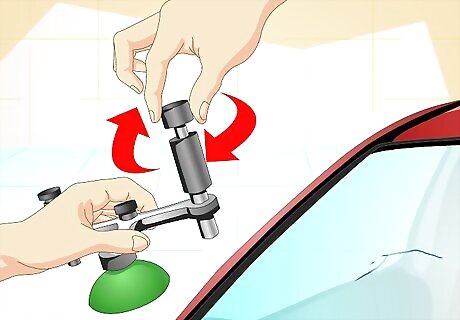
Set up the applicator. Take a few minutes to become familiar with how the applicator works. There are many different models, but most are not difficult to figure out by following the instructions. Check for the following: Identify the syringe or barrel where you load the resin, and the cap or O-ring to close it. Find the dial or bolt used to adjust pressure, moving the applicator into or away from the windshield. Check the instructions for how to operate the applicator. A syringe applicator has a simple piston, but some bridge applicators may have a unique mechanism.
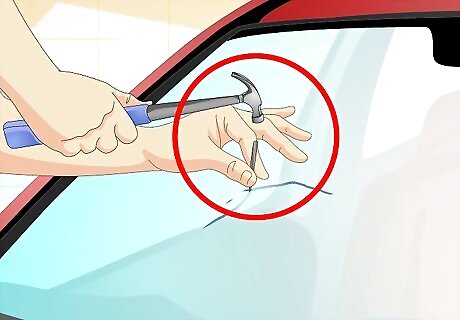
Tap a small hole if necessary. This is the step with the greatest risk of causing further damage to the windshield. Fortunately, this is only necessary if repairing a long crack that does not end in a circular or semicircular hole, or if filling a small "star break" with no piece of glass missing. To tap the hole, place a bullseye tapper (or a sturdy needle) on the star crack or the end of a crack. Tap it gently with the suction cup removal tool (or any hard object) until a small hole pops out. In some cases, you'll need to drill into the hole before tapping. For home repairs, never drill more than ¼ of the way through the glass to maintain the integrity of the windshield. It may be wiser to hire a professional instead if you can't tap the hole without a drill.
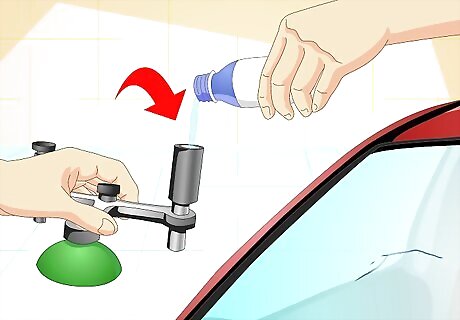
Load the resin into the applicator. Most repair kits come with two types of resin. One is meant to fill cracks, and the other to fill chips. Load the applicator with the resin needed for your repairs, according to kit instructions. In most cases, you'll only need a few drops of resin.
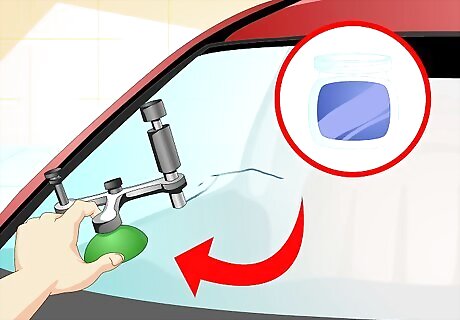
Position the applicator to repair a crack. Cover the suction cups with a thick layer of lubricant, so they can glide across the windshield. Position the suction cups so the applicator tip is over the hole at the end of the crack. Tighten until it presses gently against the glass. If your kit didn't come with lubricant, try petroleum jelly (Vaseline). If you are using a syringe applicator with no suction cups, just hold it against the end of the crack.
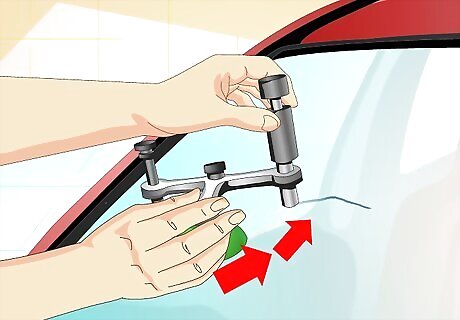
Apply the resin along the start of the crack. Move the applicator along the first 2–3 inches (5–7.5 cm) of the crack. Apply resin according to your model's instructions. Typically, this involves drawing back air with a piston or other vacuum mechanism, then letting go to push the resin into the crack. Slide back and forth over the crack, making sure the resin is going in. If the resin won't reach inside the crack, flex the glass gently with your thumb as you apply. This should only be necessary to get it started. Apply tape around the chipped area to contain any excess resin. While holding the syringe down with one hand, slowly pull the syringe out until the last tab on the syringe can be locked in place. This creates a vacuum that pulls the air out of the chipped area. Look at the chipped area from the inside and if the chip has not been completely filled, press a little more on the syringe plunger to add a bit more pressure to the resin to fill the gap. Do not press the plunger so hard that the resin leaks out of the spout, though.
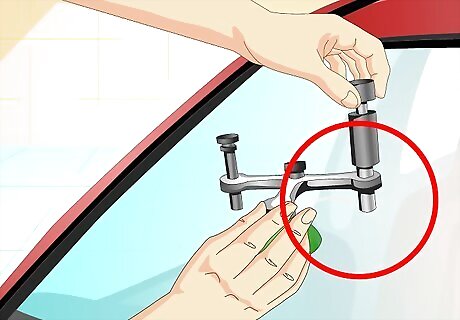
Seal the rest of the crack. Move the applicator over the length of the crack. Once you are sure the resin is entering the crack, you should be able to seal the crack in one slow movement. Note that the crack will still be visible at this point.
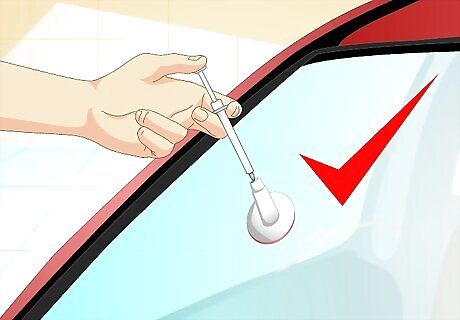
Fill chips and dents with thicker resin. Load the applicator with pit fill, or whichever type of resin your kit includes for filling dents. If using a bridge applicator, lightly lubricate the suction cups so they stick firmly to the glass. Position the applicator tip over the chip, and use the vacuum/pressure system until the resin fills the dent completely. Syringe applicator kits usually come with a separate suction cup to be placed over the dent, with a hole for the syringe to slot into. Remember, star-shaped breaks with no glass missing need to have a bullseye crack tapped out first. Clean out the applicator first if it contains a different type of resin.
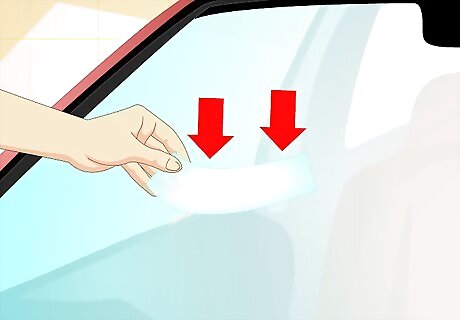
Cover all resin with curing tape. This is also called curing strips or curing tabs when sold in different sizes. This holds the resin in place during curing, preventing it from oozing back out of the crack or pit. You may need a suction cup removal tool or a razor blade to remove the applicator. Never use plastic wrap or other substances not specifically meant for this purpose. Some of these block UV light, and therefore stall the curing process indefinitely.
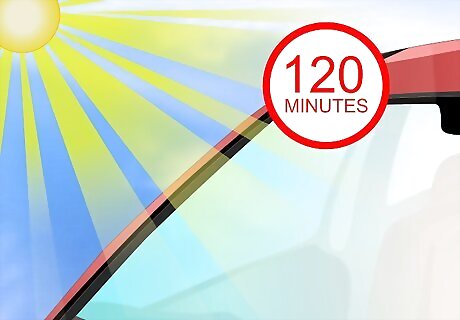
Let the resin cure. Leave the repaired areas in full sunlight or under an ultraviolet light until cured. This can take anywhere from 30 to 120 minutes, depending on the brand and the strength of the ultraviolet lamp or sunlight conditions. Check the instructions for your product, and err on the side of a longer wait time. Driving or opening car doors before the resin is fully cured increases the chance of lengthening cracks.
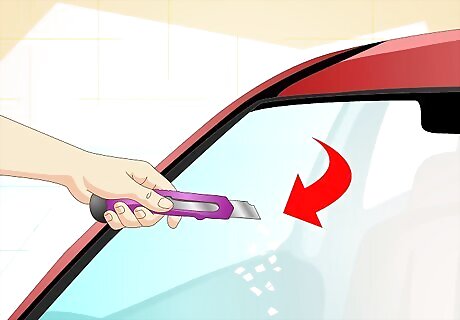
Scrape off excess resin. Remove the curing strips. Scrape the resin along the windshield surface using a razor blade. Remove excess resin until the windshield is smooth. If the windshield is blurry or the crack is still visible enough to interfere with driving, you may need to cure it again with a special refinishing resin. Wipe clean with a glass cleaner once you're done. Fit the razor blade in a sturdy razor blade holder to prevent injury.














Comments
0 comment